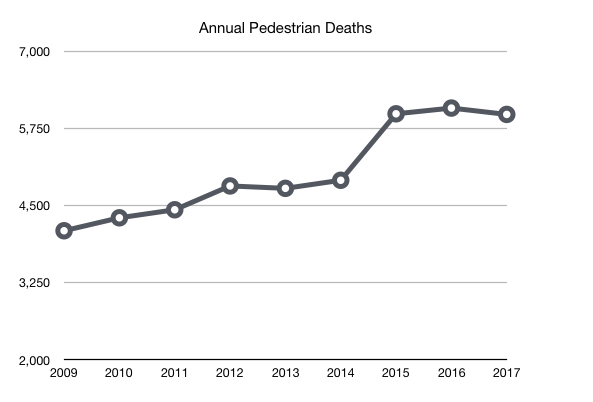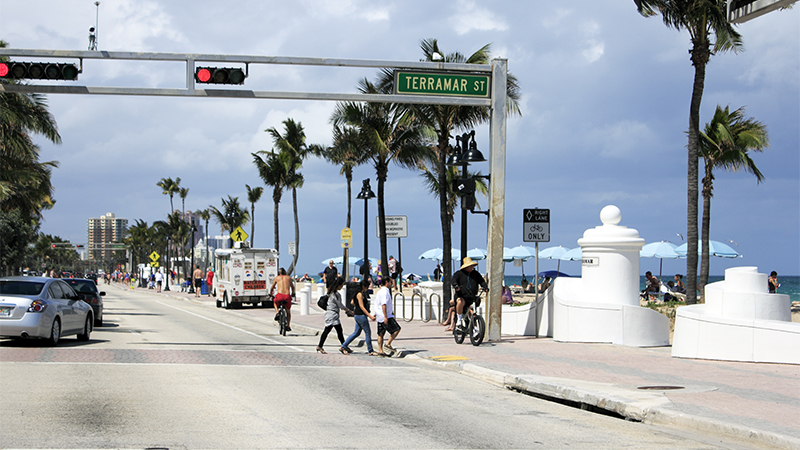America's pedestrian safety crisis isn't going anywhere.
Nearly 6,000 pedestrians were killed in 2017, according to the National Highway Transportation Safety Administration — the second highest figure since 1990.
The highest was 2016 — meaning that the last two years have been the deadliest for walkers in our nation's history.
The 5,977 dead pedestrians represents a 2-percent drop since 2016. But that's the extent of the "good" news.
Pedestrian deaths overall remain 46 percent higher than they were in 2009:

It's, frankly, outrageous, said Heidi Simon of America Walks.
"We know what works to reduce pedestrian fatalities," she told Streetsblog, citing a need for more basic infrastructure changes such as road diets and bike lanes, in addition wider efforts to reduce speeding.
"We need the political will and the commitment to do so," she added.
Interestingly, while fatalities declined for many groups, including 1 percent for car occupants and 8 percent for cyclists, they increased 3 percent for occupants of SUVs and for drivers of large commercial trucks they increased 18 percent.
A host of data supports the idea that the growth of SUVs has been a contributing factor in the explosive growth of pedestrian deaths. Pressure has been building on federal traffic safety organizations to use their regulatory authority to address the danger posed by SUVs. But the Trump Administration has resisted any attempt to hold automakers accountable for pedestrian safety.
Regulations targeting blind spots and other safety weaknesses in large commercial trucks have also been lacking. These vehicles are responsible for a disproportionate share of bike and pedestrian deaths. Rather than work to improve them, the Trump Administration actually rolled back new safety measures for large commercial trucks that moved forward during the Obama years.
Traffic deaths overall have been rising at a fast clip since 2014. Early data for 2018, however, is projecting a 3 percent total decline over 2017.






